AirVisual is a company that collects and shares data on air quality from all around the world. Until now, their data has been collected from research stations all around the world. This is the same method of research the EPA uses to create the regulations that restrict pollution.
The problem with these services is that there is a finite number of data points. To get a more accurate picture of the air we breathe, AirVisual is empowering people to measure the air quality in homes around the world.
Enter the AirVisual Node. This unique tool serves two purposes. In the background, it will track the air quality both inside and outside of your home to contribute to AirVisual’s research. In the foreground, it provides consumers with all the information they need to make healthy decisions.
Being aware of the pollution levels in the air you breathe is extremely important. Poor air quality won’t make you sick overnight, but it can cause health problems many years in the future. Sometimes, keeping your home free of pollutants can be as simple as closing the window on a windy day. Other times, there is a more serious issue at hand.
While this isn’t the first air quality monitor on the market, there are several key features that make the Node seem like it may be the best. We decided to go hands-on and see how it performs.
First Look
The Node is a large ring shaped device with a large 5” LCD display on the front. The screen is intelligently laid out, providing at a glance information about your current and historical air quality, both inside and out. Inside the unit is an advanced laser particle sensor. It is capable of measuring the carbon dioxide levels, as well as the total level of airborne particles. This is a smart device, so it requires an internet connection to function. Only the indoor air quality is directly measured. The outdoor air quality is pulled remotely from AirVisual’s servers, intelligently tweaked to give a more accurate representation in your specific geographic area.

Design
The AirVisual Node has an attractive design in line with most of the smart devices on the market. It’s ring shape is quite unique, and helps it to stand out on your desk. While it’s in operation, you can hear the tiny fan quietly whirring in the background. It actually pulls air in evenly through all of the tiny vents located around the top and bottom of the case.
By spreading these vents out, it makes it easy for the Node to filter out the larger dust particles, allowing it to more accurately measure pollutants. This also means that you can place it anywhere you see fit. With an air quality monitor that only pulls in air through one tiny area, you can reduce its effectiveness by placing it took close to a wall, or somewhere with low airflow.
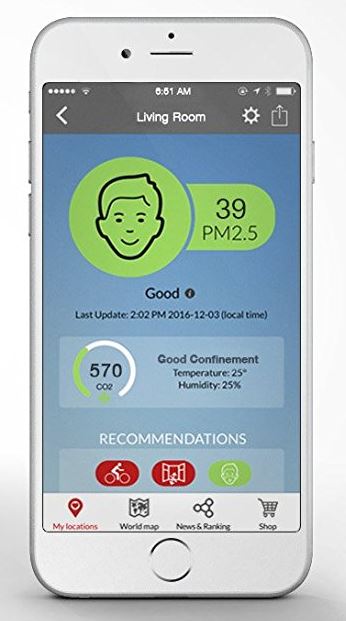
Setup Procedure
The Node is controlled with four buttons located on the top portion of the case. This allow you to scroll through the menus, and select the relevant information. When you first turn it on, you’ll be asked to connect to a WiFi network. You can either do this through the Node itself, or from a smartphone. We’d recommend using a smartphone, as the Node doesn’t have a touch screen.
Trying to enter complicated wireless passwords by scanning through the alphabet can be a little cumbersome. Regardless of what menu you use, this is the only step needed to get it up and running, making it very user friendly.
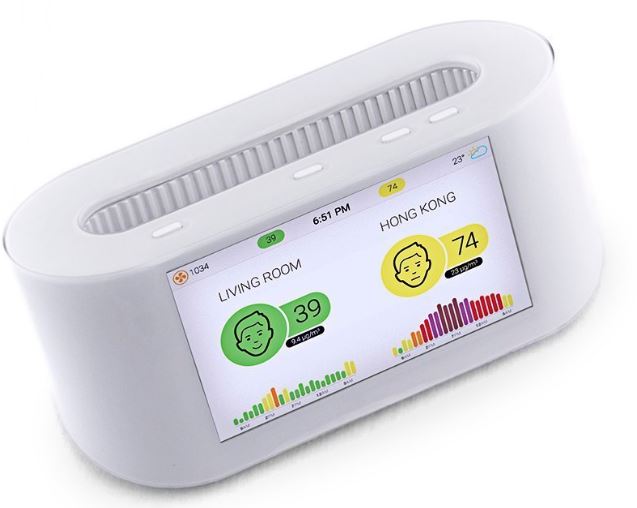
Display
The massive 5” display is one of the things that set this air quality monitor apart from the competitors. You’ll see two faces, one on the left and one on the right. A green smiling face indicates good air quality, while a red masked face indicates poor air quality. By pushing one of the buttons on top, you can replace the facial indicators with a dial indicator that tells you the exact levels (in parts per million) of pollution in the air. The dial slowly moves from green to red, providing a more detailed look at the air quality.
Below each of these indicators is a historical chart. This is shown by a bar graph. Each bar represents a 1 hour block of time, and the height of the bar represents the number of particles detected in the air. We found this to be surprisingly accurate. When we cleaned the house, using both the vacuum cleaner and a broom, we noticed that the readings were significantly higher during this period. Of course, this measurement is averaged over a 1 hour period, so the change isn’t too drastic from hour to hour unless there is another reason for the pollution.
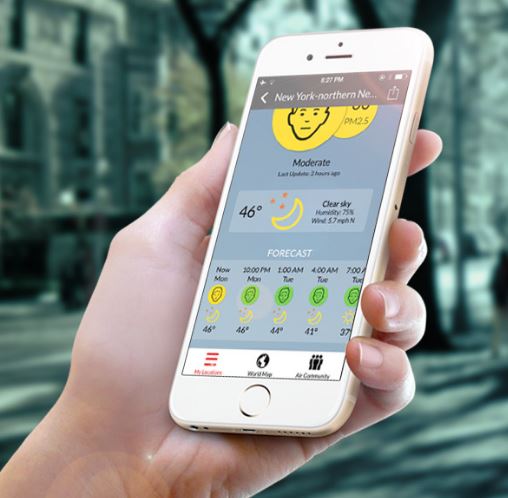
Accuracy
What do these numbers actually mean? Technically speaking, what you’re seeing isn’t a perfect representation of the actual air quality. It’s only the number of measured particles. This may seem like a small semantic difference, but with a low-quality sensor this means that the numbers are virtually worthless. Fortunately, the Node is very much unlike cheaper sensors. Because all of this data is being sent back to their datacenter, they used an extremely accurate sensor that can ready particles down to a size of 2.5 micrometers. The number you see on your screen is medical grade, and on the very same scale as government measurements.
Particles between 2.5 and 10 micrometers are called Inhalable Coarse Particles. These are the kinds of particles that can irritate your lungs. If you suffer from COPD, lung cancer, or asthma, these are the particles that can set off an attack.
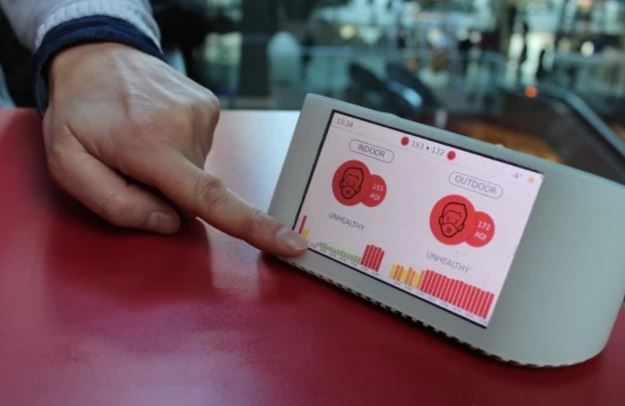
The Node measures PM2.5 (fine particulate matter, the most hazardous pollutant to human health) and CO2 (which is a gas, not particulate), the latter can cause headaches, fatigue, difficulty concentrating, and facilitate the spread of bacteria & viruses.
In order to keep the sensors as accurate as possible, there is some mild temperature and humidity correction that takes place. To put these extra sensors to good use, the Node also displays these metrics as well.
Additional Features
Being linked up to AirVisual’s data centers has its advantages. Not only do you get a 7-day weather forecast, but you’ll also be given a 7-day air quality forecast. This will be immensely beneficial to asthma suffers who want to plan the best day for yardwork, or consumers who want to know when they should run their air purifier.
Although you can always get the air quality reading from the display, you can also access it from your phone, remotely, at any time. All of your data is synced up with the cloud, so you don’t have to be on the same WiFi connection to take advantage of this.

Disadvantages
Getting the outdoor air quality relies on having a monitoring station nearby. There are over 8,000 locations all around the world, so there is a pretty good chance that there will be one in your city. Plus, these measurements aren’t just what the air quality is at the station. They monitor wind direction and weather to extrapolate air quality at your exact location. But although this is very accurate for urban areas, those of you who live in a very rural area may not receive accurate outdoor air quality.
Another feature we would have liked to see is a touchscreen. Entering your WiFi password via buttons can be a little cumbersome. Additionally, a touchscreen could make changing the display settings a little easier.
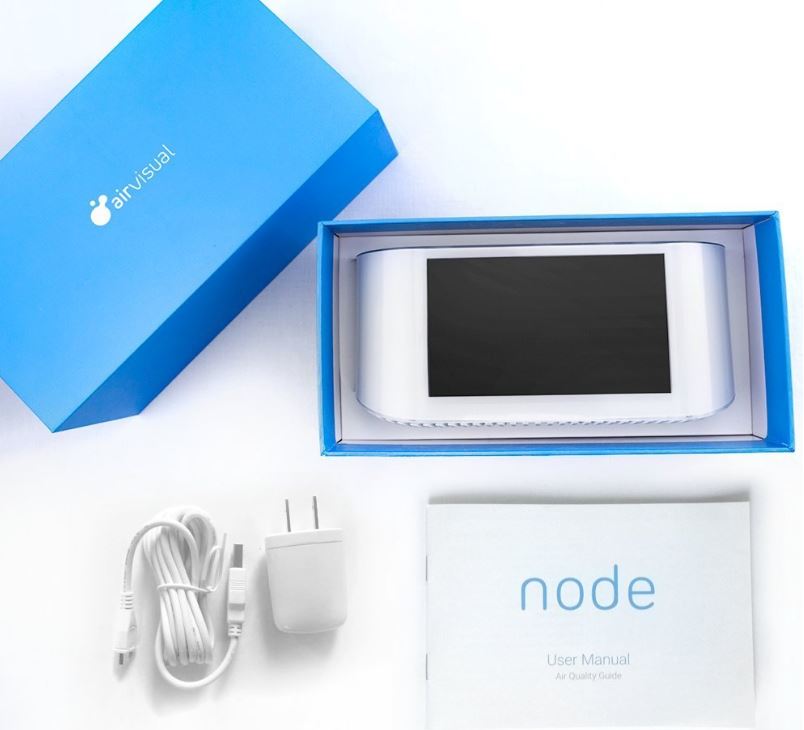
Final Verdict
Even though this isn’t the first air quality sensor on the market, it’s one of the first affordable models we’ve come across that has such a high-quality laser sensor. For this reason, the AirVisual Node is the first product we’d recommend to anyone who suffers from asthma, or other disorders that affect your breathing ability. The combination of accuracy plus an air quality forecast means that you’ll better be able to plan your day.
Another feature we really liked is the ability to contrast the inside air against the outside air. It serves as a handy reminder to open the windows when we sweep (assuming the outdoor air quality is good) or to keep them closed, even on a hot day.
There is one small disadvantage to the air quality monitor. It can tell you when there is a problem, but there isn’t much it can do about it. If you’re looking to take a more active role in cleaning the air in your home, we’d recommend checking out a smart air purifier. These often give you a basic reading of the air quality in your home, but they can be used in conjunction with the Node to help you protect yourself against pollutants.
Meet Ry, “TechGuru,” a 36-year-old technology enthusiast with a deep passion for tech innovations. With extensive experience, he specializes in gaming hardware and software, and has expertise in gadgets, custom PCs, and audio.
Besides writing about tech and reviewing new products, he enjoys traveling, hiking, and photography. Committed to keeping up with the latest industry trends, he aims to guide readers in making informed tech decisions.

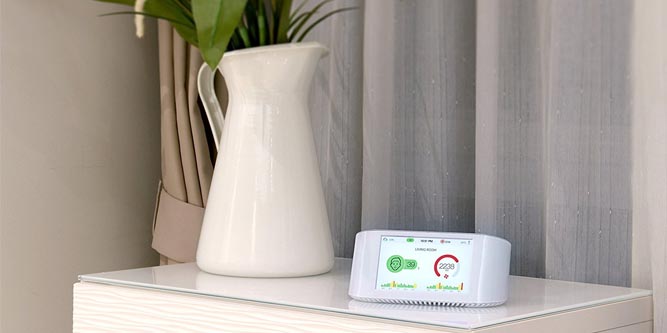
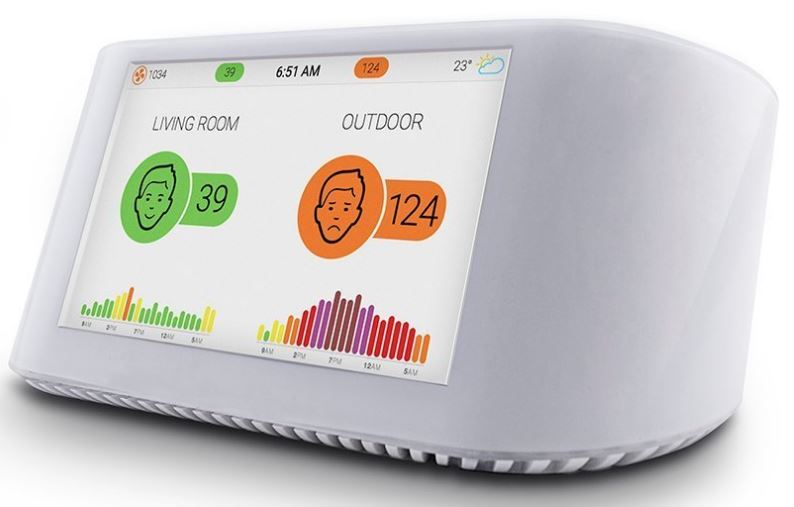
Hi, Great review thanks.
I’m owing an Airvisual node, and its really great so far.
However I’ve sent an email with a question to their customer support and never heard back from them….